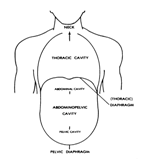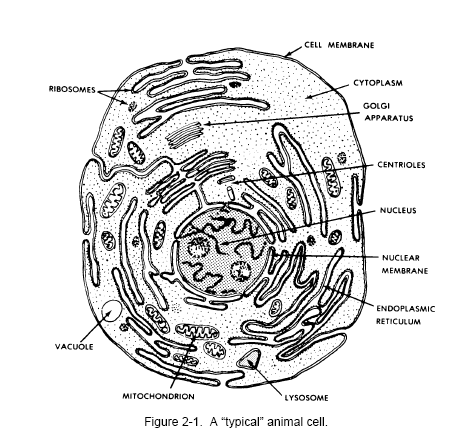TABLE OF CONTENTS
INTRODUCTION
1 INTRODUCTION
TO BASIC HUMAN PHYSIOLOGY
Exercises
2 PHYSIOLOGY
OF CELLS AND MISCELLANEOUS TISSUES
Section I.
Cells
Section II.
Body Fluids
Section III.
Homeostasis
Section IV.
Cell Growth and Multiplication
Section V.
Epithelial Cells and Tissues
Section VI.
Fibrous Connective Tissue (FCT)
Section VII.
Fatty Tissues.
Exercises
3 ENVELOPES OF
THE BODY
Section I.
Introduction.
Section II.
Integument Proper..
Section III.
Integumentary Derivatives
Section IV.
Functions of the Integumentary System.
Section V.
Subcutaneous Layer
Section VI.
Investing Deep Fascia.
Section VII.
Body Temperature Control
Section
VIII. Vitamin D Production
Section IX.
Superficial Wound Healing
Section X.
General Adaptations of Grasping/Holding
Section XI.
Variations in Penetration
Exercises
4 THE SKELETAL
SYSTEM
Section I.
General.
Section II.
Tissues and Tissue Processes of Skeletal Elements
Section III.
Definition and Types of Bones
Section IV.
A "Typical" Long Bone
Section V. A
"Typical" Flat Bone
Section VI.
Sesamoid Bones.
Section VII.
Definition and Types of Joints
Section
VIII. A "Typical Synovial Joint.
Section IX.
The Axial Skeleton
Section X.
The Appendicular Skeleton..
Exercises
5 PHYSIOLOGY
AND ACTIONS OF MUSCLES
Section I.
Muscle Tissues
Section II.
Skeletal Muscles
Section III.
Some Skeletomuscular Mechanics
Section IV.
Nervous Control of Skeletal Muscles
Exercises
6 THE HUMAN
DIGESTIVE SYSTEM
Section I.
Introduction.
Section II.
Ingestion and Initial Processing of Foods.
Section III.
Swallowing (Deglutition)
Section IV.
Temporary Storage
Section V.
Digestion and Absorption
Section VI.
Some Protective Mechanisms Associated with the Human Digestive
System
Section VII.
Vitamins
Section
VIII. Elimination of Unused Materials
Exercises
7 THE HUMAN
RESPIRATORY SYSTEM AND BREATHING
Section I.
Introduction
Section II.
Introduction to Human Breathing
Section III.
Costal ("Thoracic") Breathing
Section IV.
Diaphragmatic ("Abdominal") Breathing
Section V.
Introduction to the Human Respiratory System.
Section VI.
The Supralaryngeal Structures
Section VII.
Larynx
Section
VIII. The "Respiratory Tree" and Pulmonary Alveoli .
Section IX.
Lungs and Pleural Cavities
Section X.
The Pulmonary NAVL
Section XI.
Exchange and Transportation of Gases:Artificial
Breathing/Resuscitation
Exercises
8 THE HUMAN
URINARY SYSTEM
Section I.
The Kidney
Section II.
Other Parts of the Human Urinary System
Exercises
9 THE HUMAN
REPRODUCTIVE (GENITAL) SYSTEM
Section I.
Introduction
Section II.
Gametes (Sex Cells)
Section III.
The Male Reproductive System
Section IV.
The Female Reproductive System
Section V.
Intrauterine Development
Section VI.
Parturition
Exercises
10
CARDIOVASCULAR AND OTHER CIRCULATORY SYSTEMS OF THE HUMAN BODY
Section I.
Introduction
Section II.
The Blood--The Vehicle of the Cardiovascular System
Section III.
The Blood Vessels--The Conduits of the Cardiovascular System
Section IV.
The Heart--The Primary Motive Force of the Cardiovascular System
Section V.
Motive Forces Involved in Driving the Blood Through the System
Section VI.
Capillaries
Section VII.
Temperature Control by Means of the Blood.
Section
VIII. Other Circulatory Systems
Exercises
11 THE HUMAN
ENDOCRINE SYSTEM
Section I.
Introduction.
Section II.
The Pituitary Body
Section III.
The Pineal Gland
Section IV.
The Thyroid and Parathyroid Glands
Section V.
The Pancreatic Islets (Islands of Langerhans)
Section VI.
The Adrenal (Suprarenal) Glands
Section VII.
The Gonads as Endocrine Glands
Exercises
12 THE HUMAN
NERVOUS SYSTEM
Section I.
Introduction.
Section II.
The Central Nervous System (CNS)
Section III.
The Peripheral Nervous System (PNS).
Section IV.
The Autonomic Nervous System (ANS)
Section V.
Electrochemical Transmission of Neuron Impulses.
Section VI.
The General Reflex and the Reflex Arc
Section VII.
General Sensory Pathways of
the Human
Nervous System
Section
VIII. Motor Pathways in the Human Nervous System
Section IX.
Levels of Control in the Human
Nervous
System
Section X.
Miscellaneous Topics
Exercises
13 THE SPECIAL
SENSES
Section I.
Introduction
Section II.
The Special Sense of Vision
Section III.
The Special Sense of Hearing (Auditory Sense)
Section IV.
The Special Sense of Equilibrium, the General Body Sense, and
Postural Reflexes
Section V.
The Special Sense of Smell (Olfaction)
Section VI.
The Special Sense of Taste (Gustation)
Exercises
14 SOME
ELEMENTARY HUMAN GENETICS.
Exercises
--------------------------------------------
LESSON 1
INTRODUCTION TO BASIC HUMAN PHYSIOLOGY
1-1. DEFINITION
Physiology is the study of the functions of the body
at the cellular level.
1-2. LEVELS OF FUNCTION
Function in the human body occurs at three general
levels:
a. Molecular. The
basic functional entity is the molecule. The structure and interaction
of the molecules of the body is the subject of the science of
biochemistry.
b. Cellular. The
individual cell is the basis of the structure and function of the
human body. The individual human body consists of great numbers of
these cells working together as a total organism. Groups of like cells
performing a common function are called tissues. Different tissues
collected together form individual organs. Groups of organs performing
an overall function are called organ systems, for example, the
digestive system, the respiratory system, etc. When these systems are
together in a single individual, we refer to that individual as an
organism. The cellular level of function is the primary subject matter
of physiology.
c. Regional. Here,
individual parts of the human body (made up of specific organs)
perform activities as a unit. For example, the hand serves as a
grasping, tool-holding apparatus. The study of this level of function
is called functional anatomy.
1-3. INTERRELATIONSHIPS
There is an inseparable relationship between structure
and function in the human body. Every structure is designed to perform
a particular function or functions. Likewise, every function has
structures designed to perform it.
1-4. LAWS OF NATURE
The Universe has a fundamental order. The Universe is
governed by discrete and precise laws of nature. These laws are
universal, unchangeable, and omnipresent. The human organism is
ultimately controlled by these laws. The organic body of the human
being is essentially operated by the laws of physics and chemistry.
a. Gravitational Force
and Mass.
(1) Gravitational force. As you stand upon the
surface of the Earth, your body and its parts experience the force
called gravity. The measure of this force is called weight. Gravity
is one type of gravitational force, a force which attracts all
particles and bodies to each other. Gravity acts upon your body
during every instant of your life.
(2) Mass. If you were standing on the surface of the
Moon, you would weigh 1/6 of your weight on Earth, but your mass
would remain the same. Mass is an intrinsic property of a particle
or object that determines its response to a given force. In a given
location, the weight of an object depends upon its mass.
b. Space and Time.
Each individual occupies a certain amount of space. We exist over a
span of time. During the passage of time, we change--from an infant,
to a child, to an adult, to an adult of advanced age.
c. Physical States of
Matter. The matter around and in us exists in several states.
These various states generally reflect the closeness of the molecules
that make up the matter.
(1) Solid. The most compact organization is the
solid, which retains its specific form and shape.
(2) Liquid. Liquids tend to flow but still stay
together.
(3) Gas. Gases also flow but are widely spread and
will readily dissipate in many directions.
d. Pressure Gradients.
Substances that flow (gases and liquids) flow in very specific
directions. They flow from an area of higher pressure or concentration
to an area of lower pressure or concentration as long as the two areas
are freely interconnected. The difference in pressures of two
interconnected areas is called a pressure gradient. When plotted on
graph paper, it is in the form of a slope. The greater the difference,
the steeper is the slope and the faster the material flows.
1-5. MECHANICS/BIOMECHANICS
Machines are devices that do work. The different kinds
of machines and their modes of action are the study of applied
mechanics. The human body, as already stated, conforms in its
structural organization to the laws of physics. The body uses several
different kinds of machines, such as levers, pulleys, and valves, in
its operation. We refer to these operations as biomechanics.
1-6. LIFE PROCESSES
The planet upon which we live is composed of inanimate
(nonliving) materials such as minerals, water, etc. Living organisms
reside upon or in this mass of nonliving material. You can distinguish
living from nonliving material by the fact that living material
carries on a series of functions known as the life processes. A living
thing takes in substances, grows, moves, is irritable, and
reproduces. Often, it is difficult to distinguish between living and
nonliving materials. But in the ultimate analysis only living
materials perform all of these functions.
From Basic
Human Physiology


